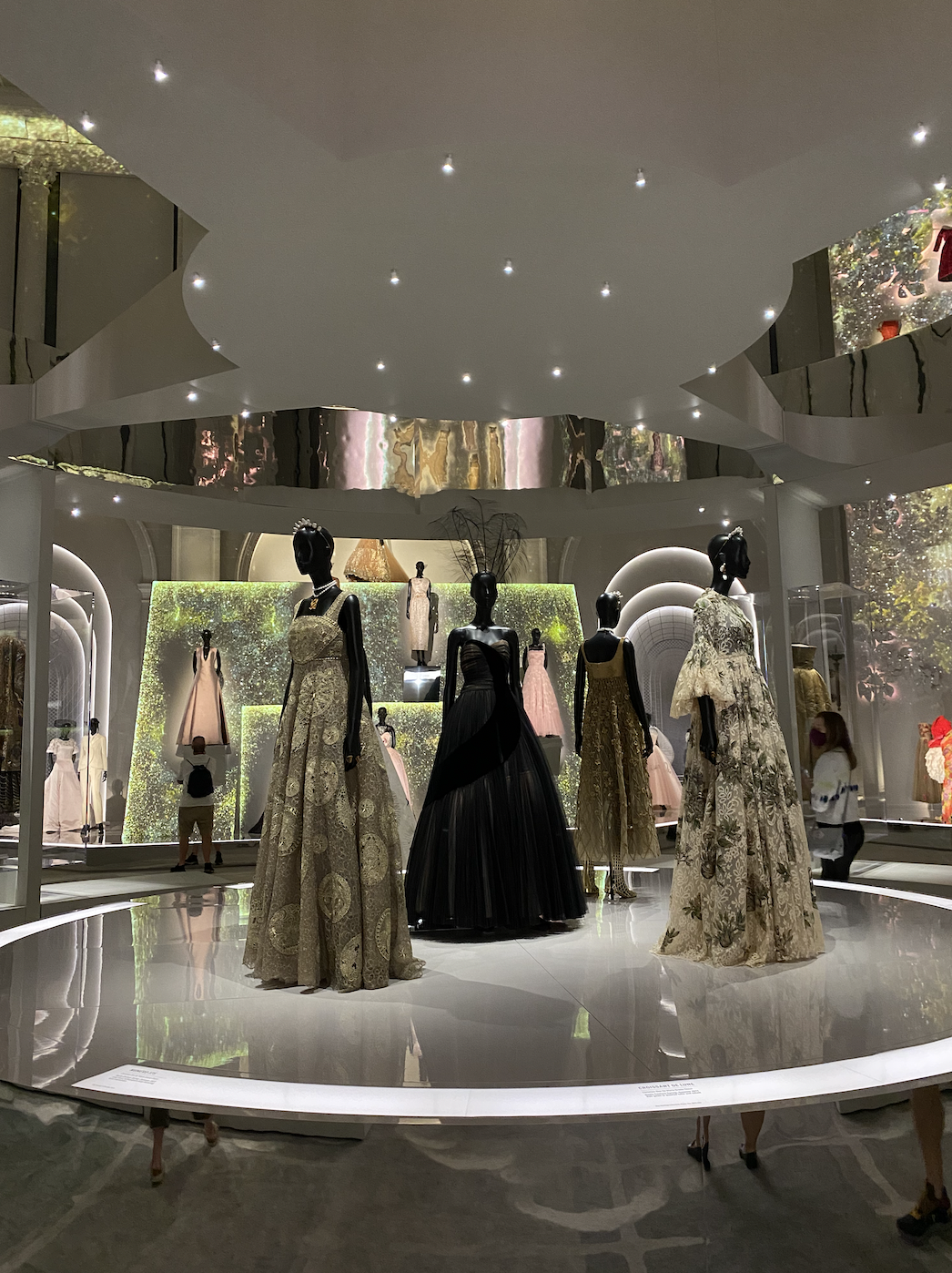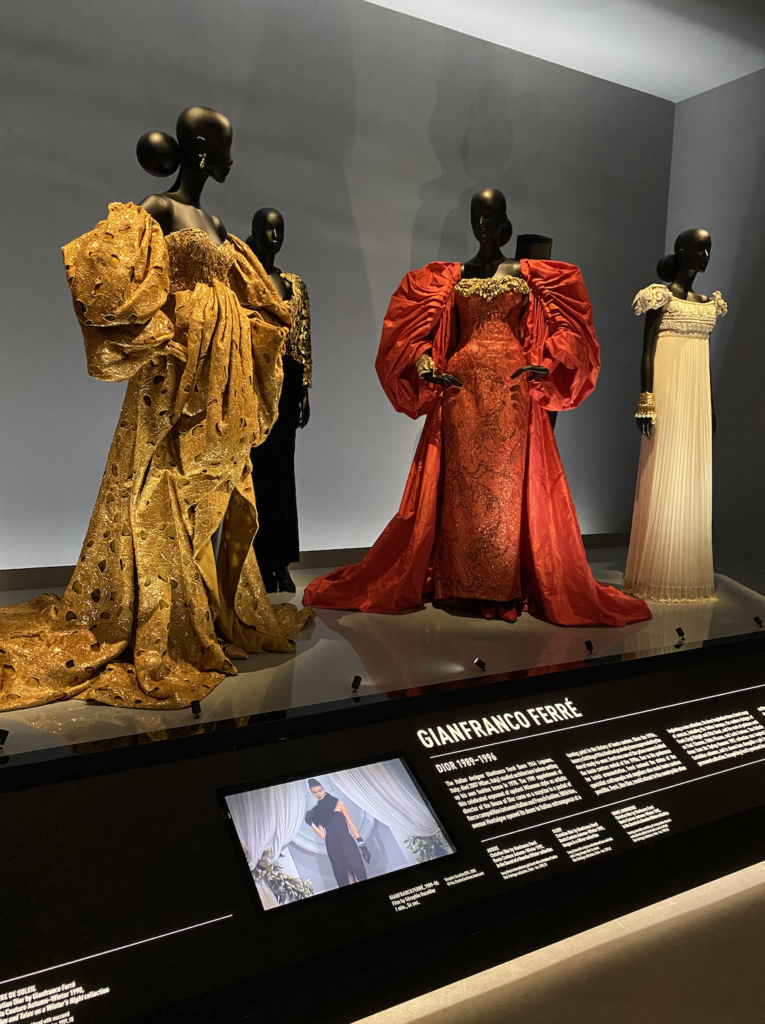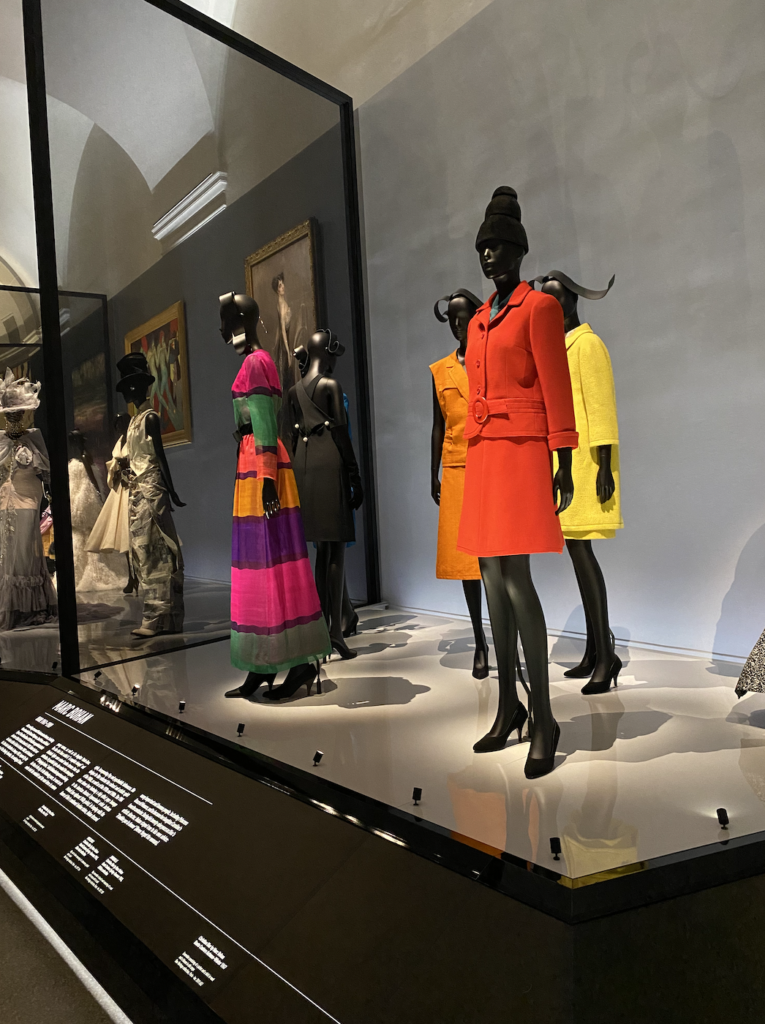Glittering specs of pink, yellow, and blue cascade down a tall white wall. The colors illuminate the flowers and leaves that are carved into the structure, creating an enchanted garden. Slowly, the glitter falls and covers a variety of dresses draped on mannequins that appear to be floating down with the glitter.
This is one of the many scenes that are on display at the “Dior: Designer of Dreams” exhibition which opened to the public on Sept. 10 and runs through Feb. 20, 2022 at the Brooklyn Museum. Nestled in between Prospect Park and the Brooklyn Botanical Garden, the museum is sure to become a fashion lover’s destination thanks to the vision of curators Florence Müller and Matthew Yokobosky. The exhibition takes viewers through the history of the Christian Dior fashion house and shines a light into the life of the designer himself.
The exhibition opens with the launch of Dior in 1947. During this time, Dior showed his first haute couture collection, and many items from that collection are on display. Dresses dated all the way back to 1947 hang on mannequins illuminated by white lights. A tightly fitted bodice that flows out into a hooped skirt was the look of time, and Dior followed suit.
In the next room, viewers are introduced to the artistic directors that presided over the fashion house after the death of Dior. Each designer adapted Dior fashions to the styles of time, ranging from the late 1950s to present day. As the viewer travels through the exhibition, the silhouettes, color patterns and themes of collections begin to change with the time periods. The muted colors of the 1940s turn to black as the 1950s — and the death of Christian Dior comes into play — but the hoop skirt remains. Then the viewer witnesses a drastic change in the style of clothing when Yves Saint Laurent takes over the fashion house in 1958 following Dior’s death. The modesty of Dior’s collection is overrun by form-fitting, elegant dresses that play with textures and different materials, such as pearls.
Then flower power and the modernist movement took over Dior designs as Marc Bohan introduced bright colors and the boxy, pencil skirt silhouette to the fashion house in the 1960s. With the welcoming of Bohan’s predecessor, Gianfranco Ferré, in 1989 came the inspiration of the Renaissance. Ferré used elaborate and intricate fabrics to create gowns fit for royalty. John Galliano became creative director in 1996 and followed suit, using inspiration from the 18th century to create corseted gowns with bustling skirts. Galliano played with fabric to create different shapes, like ruffles and puffs.
More recently in 2012, Raf Simmons changed the look of the fashion house with his sophisticated business attire collection of patterned trench coats and beaded skirts and dresses. Lastly, Maria Grazia Chiuri, Dior’s current artistic director, followed suit by mixing blazers with big ball gown-like skirts and graphic tees.
Other galleries in the exhibit include the Eighteenth Century room, a display of Dior pieces that were inspired by the fashion of the 18th Century and the Colorama section, a rainbow display of Dior pieces separated by color. The exhibit also features a gallery titled Miss Dior, which showcased how flowers inspired the Dior House’s perfume collection; as well as a gallery titled Stars of Dior, which featured Dior outfits that celebrities, such as Princess Diana and Rihanna, have worn to special events.
While all aspects of the exhibition were expertly curated, the true stars of the show are the Dior Atelier and the Enchanted Garden exhibits. For Dior Atelier, curator Florence Müller created a glass cabinet of completely white haute couture pieces and placed said cabinet into a stark white room covered in mirrors. The pieces are stacked from floor to ceiling and are reflected down by the mirror on the ceiling. The imagery is meant to evoke the starting point of the design process when a blank canvas has the potential to turn into something magnificent.
Stepping out of the Atelier hallway, the viewer enters into an enchanted garden of Dior dreams. Florals are an iconic Dior signature pattern, as shown in the Eighteenth Century and Miss Dior collections, and the enchanted garden shows just how much of an impact florals have had on the brand. Flowers and leaves are etched into tall white walls along the borders of the room. Dresses hang from the walls, like flowers on a vine, and are illuminated by projections of glistening sparkles — creating the illusion of fairy dust. All of the dresses have a garden theme, ranging from dresses that look like flowers to patterns that look like butterfly wings. In the center of the room, A black gothic chandelier hangs over a gazebo-esque structure. A circle platform sits in the center of the structure, where gorgeous gold-thread-embroidered gowns are displayed. One dress features stars etched in gold on white fabric. Another dress, a dramatic black tulle ball gown, commands attention in the midst of all the lights and colors. There are no words that can describe this setting to its fullest potential, but the detail in the presentation is truly breathtaking.
At the end of the exhibition, there is a hallway — the barest in the entire space. On the navy painted walls, there is nothing except a painting of Christian Dior by Kim Dong Yoo, a quote from Dior saying “My dresses make a princess of every woman”, and a glass case. In this glass case sits a small brass sculpture of a star. Dior found this metal star on the sidewalk WHEN, and being a very superstitious man, he believed it was his “lucky star.” One can truly say after witnessing “Dior: Designer of Dreams” that his wish upon a star came true.









